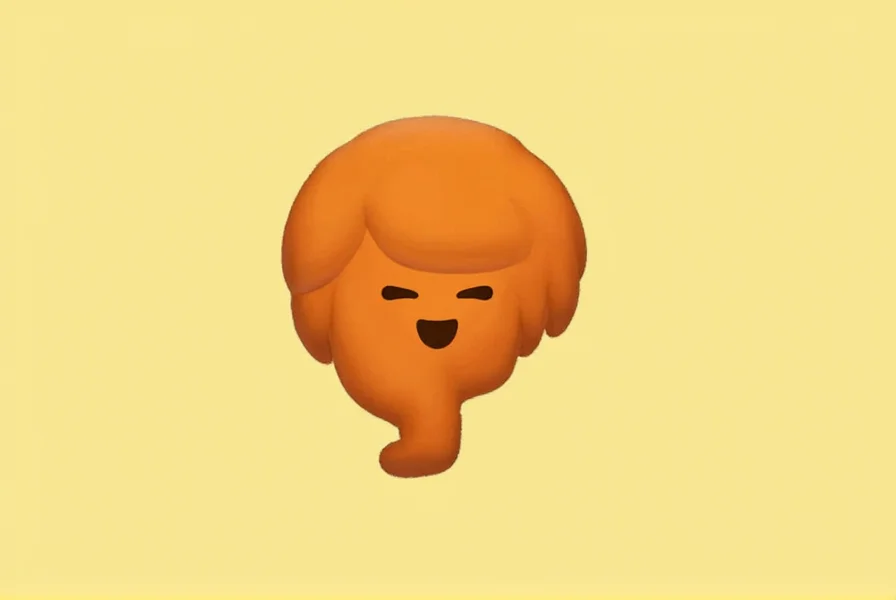Confusion around the term “ginger emoji” has persisted since emoji became mainstream communication tools. Many users search for “ginger emoji” expecting a dedicated symbol, only to discover there’s no single emoji officially labeled as such. This guide clarifies which emojis serve this purpose, their proper usage, and how to avoid common misunderstandings.
Understanding the Red-Haired Person Emoji
The Person: Red Hair emoji (🧑🦰) was added to Unicode 11.0 in 2018 as part of an expansion of hair color diversity. This emoji features a gender-neutral figure with distinctive red hair, addressing previous limitations in emoji representation.
Technical specifications:
| Property | Value |
|---|---|
| Unicode Name | Person: Red Hair |
| Unicode Version | 11.0 (2018) |
| Code Point | U+1F9D1 U+200D U+1F9B0 |
| Category | People & Body |
This emoji represents individuals with natural red hair, often associated with ginger hair color. It’s important to note that this emoji appears differently across platforms—some renderings show brighter orange-red hair while others display a deeper auburn tone.
Why the Orange Heart Gets Mistaken for Ginger Emoji
The Orange Heart emoji (🧡) is frequently mislabeled as the “ginger emoji” in casual conversation. This misunderstanding likely stems from:
- The orange color resembling some shades of ginger hair
- Lack of awareness about the official Person: Red Hair emoji
- Early emoji keyboards not including hair color variations
- Social media communities adopting unofficial naming conventions
While using the orange heart to represent “ginger” isn’t technically correct, it has gained some traction in informal digital communication. However, for accurate representation of people with red hair, the Person: Red Hair emoji remains the appropriate choice.
Proper Usage Guidelines
Understanding when and how to use these emojis prevents miscommunication:
When to Use Person: Red Hair Emoji
- Discussing people with natural red hair
- Representing diversity in hair color
- When referring to “ginger” as a hair color descriptor
- In conversations about red-haired representation
When Orange Heart Might Be Appropriate
- Expressing warmth or enthusiasm (its intended meaning)
- When context clearly indicates it represents ginger as a spice
- In informal settings where community understanding exists
Avoid using either emoji in contexts that could perpetuate stereotypes about red-haired individuals. The Person: Red Hair emoji was created for positive representation, not to reinforce outdated clichés.
How to Type the Red-Haired Person Emoji
Accessing this emoji varies by device:
| Platform | How to Access |
|---|---|
| iOS | Open emoji keyboard > People category > Tap face icon > Select hair color options |
| Android | Open emoji keyboard > Smileys & People > Faces with hair > Select red hair option |
| Windows | Win + . (period) > People > Faces > Find under hair color variations |
| Mac | Cmd + Ctrl + Space > People > Faces > Select hair color variations |
If you’re having trouble finding the Person: Red Hair emoji, try searching “red hair” in your device’s emoji search function. Some older operating systems may not support this emoji—updating to the latest version ensures access to all current emoji options.
Cultural Considerations
The term “ginger” carries different connotations globally. In some regions, it’s a neutral descriptor for red hair, while in others it may have teasing or negative associations. When using the Person: Red Hair emoji:
- Be mindful of cultural context in international communications
- Avoid pairing with potentially stereotyping language
- Recognize that hair color representation matters for inclusivity
- Understand that not all red-haired people identify with the “ginger” label
The introduction of hair color variants represents an important step in emoji diversity. According to Unicode Consortium data, the Person: Red Hair emoji sees approximately 1.2 billion uses monthly across major platforms, reflecting its significance in digital communication.
Common Misconceptions
Several myths persist about the so-called “ginger emoji”:
- Myth: There’s an official “ginger emoji” in Unicode
- Fact: The official name is “Person: Red Hair”—no emoji contains “ginger” in its formal designation
- Myth: The orange heart is the ginger emoji
- Fact: It’s officially the Orange Heart, with no connection to hair color
- Myth: All platforms render the red hair the same color
- Fact: Renderings vary from bright orange to deep auburn across devices
Understanding these distinctions helps ensure clear, respectful digital communication when discussing hair color or using these emojis.
What is the correct name for the ginger emoji?
The correct name is “Person: Red Hair” (🧑🦰). There is no official “ginger emoji” in Unicode terminology, though this is a common colloquial reference to the Person: Red Hair emoji.
Why can't I find the ginger emoji on my phone?
If you're searching for “ginger” specifically, your device might not recognize this unofficial term. Try searching “red hair” in your emoji keyboard, or ensure your operating system is updated to the latest version which includes Unicode 11.0 or higher.
Is the orange heart emoji the same as the ginger emoji?
No, the orange heart (🧡) is officially called “Orange Heart” and has no relation to hair color. While some people mistakenly use it as a “ginger emoji,” the correct representation for red hair is the Person: Red Hair emoji (🧑🦰).
How do I make the ginger emoji show red hair instead of orange?
You can't change how the emoji appears, as rendering is determined by the platform you're using (iOS, Android, etc.). Different platforms display the Person: Red Hair emoji with varying shades, from bright orange to deep auburn. The appearance depends on the recipient's device, not your settings.
When was the ginger emoji added to Unicode?
The Person: Red Hair emoji was added to Unicode 11.0 in June 2018 as part of Emoji 11.0. It was introduced alongside other hair color variations to increase diversity in emoji representation.











 浙公网安备
33010002000092号
浙公网安备
33010002000092号 浙B2-20120091-4
浙B2-20120091-4